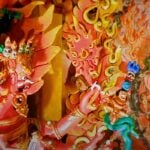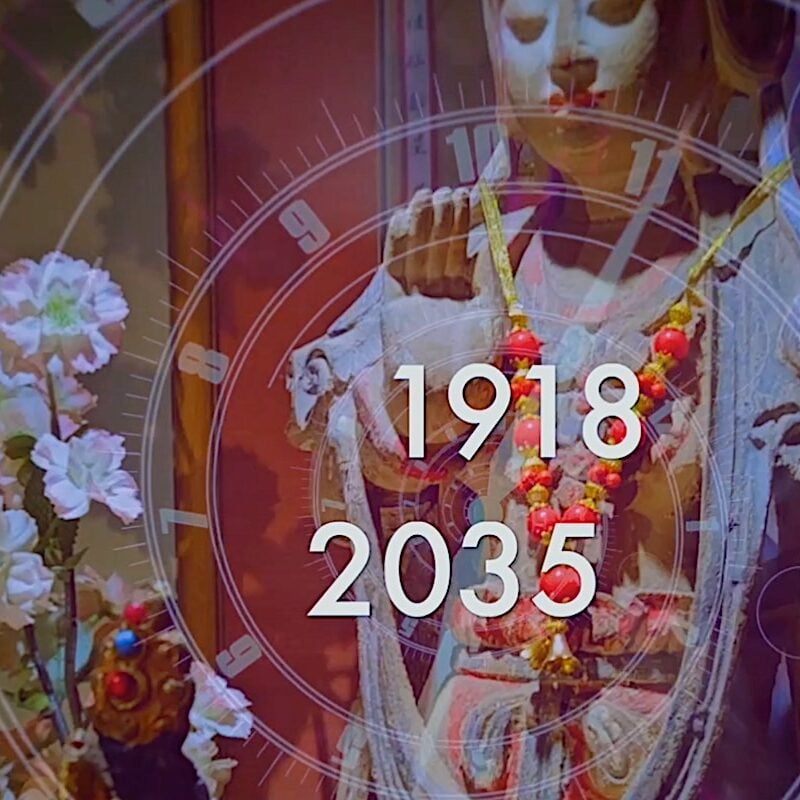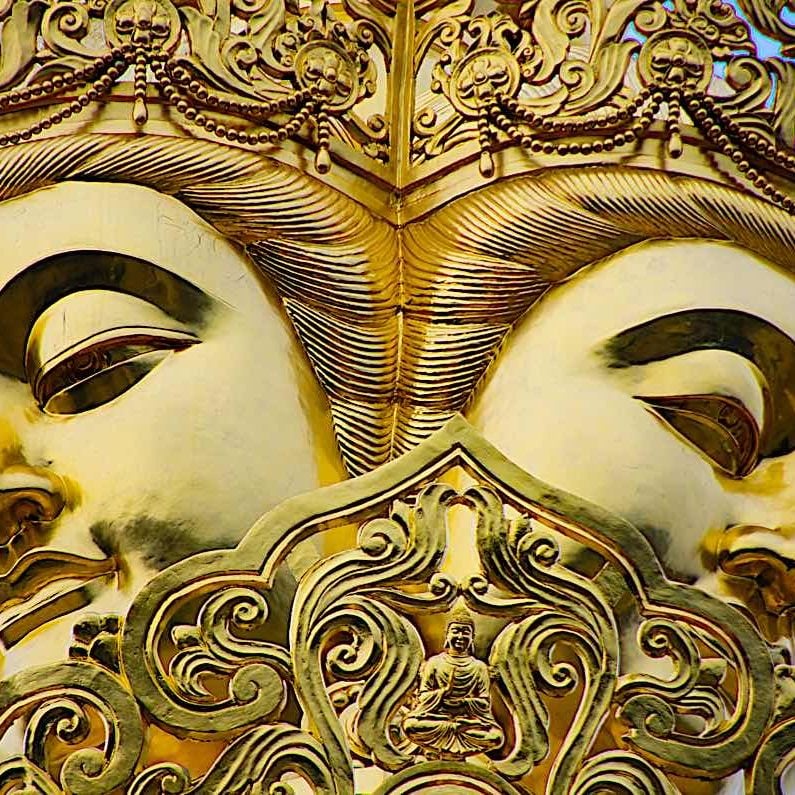Buddha’s Holy Mind, the Stupa: 18 benefits to Prostrating to, Circumambulating or Building of Stupas — according to Sutra

The Stupa is one of three “symbols” we revere and prostrate to in daily practice. The Three Sacred Objects are symbols of the Body, Speech and Mind of Buddha:
- Enlightened Body: Om syllable and Buddha’s Statue (crown chakra). Practice symbol is the vajra or dorje.
- Enlightened Speech: Ah syllable and Dharma Texts or Sutras (throat chakra). Mantra is the practice symbol.
- Enlightened Mind: Hum syllable and Stupa (heart chakra). Practice symbol is the bell (which is shaped like the Stupa dome.)
This is why we purify sacred Dharma objects with the simply mantra
Om Ah Hum
These three syllables represent the Holy Body, Speech, and Mind.
On our altar (or in our visualizations), our Buddha Statue (any Enlightened Yidam that we practice), Sutra or Dharma text, and Stupa (usually a picture or small statue) represent the Holy Body, Speech, and Mind, respectively.
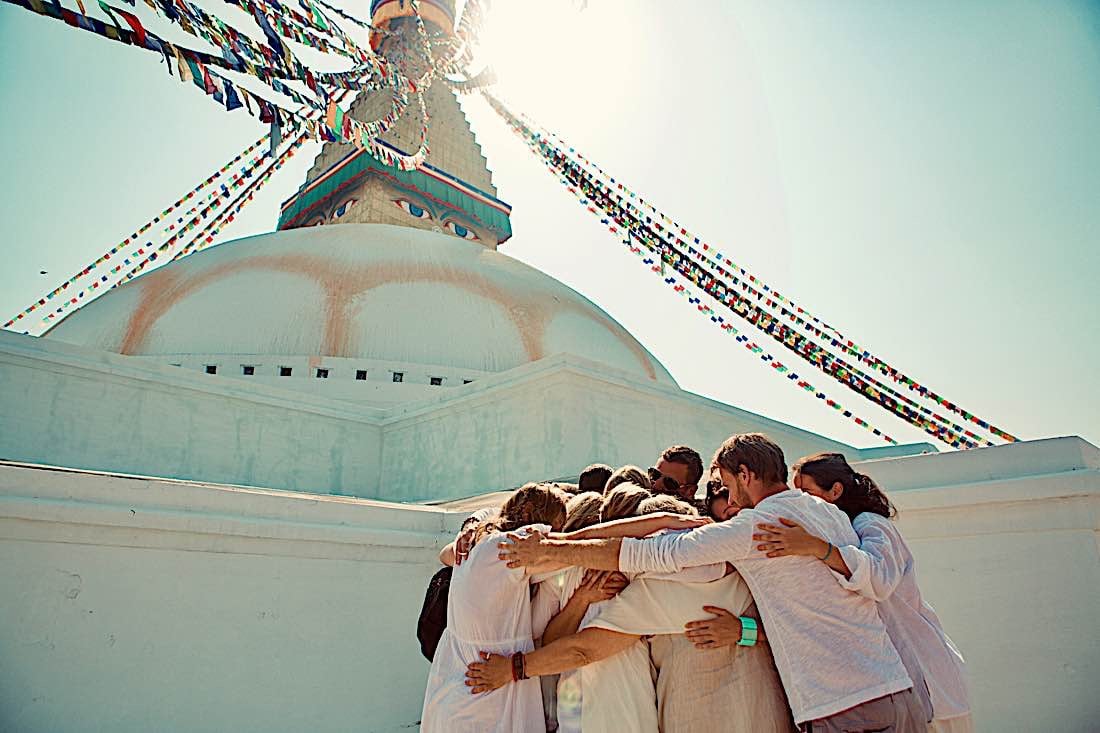
Stupas and the Eighteen Benefits
To honur the Enlightened Mind or Wisdom of the Buddha, we prostrate to — or ideally circumambulate — our Stupas.
Several Sutras cite Stupa building (Chorten in Tibetan) “while thinking of the Victorious One” as a “cause for Enlightenment.” The Analyzing Activity Sutra actually says, “Whoever builds the Stupa of the Tathagata will gain the eighteen benefits” (Je Nampa Djepe Do) — in future lifetimes. [See the list below from Sutra.] [Symbolism of Chortens or Stupas below with diagrams.]
Special Photo Feature
Traditionally, any place where a Stupa is built becomes a powerful place of healing and merit. Stupas also symbolize “Buddha’s Holy Mind.”
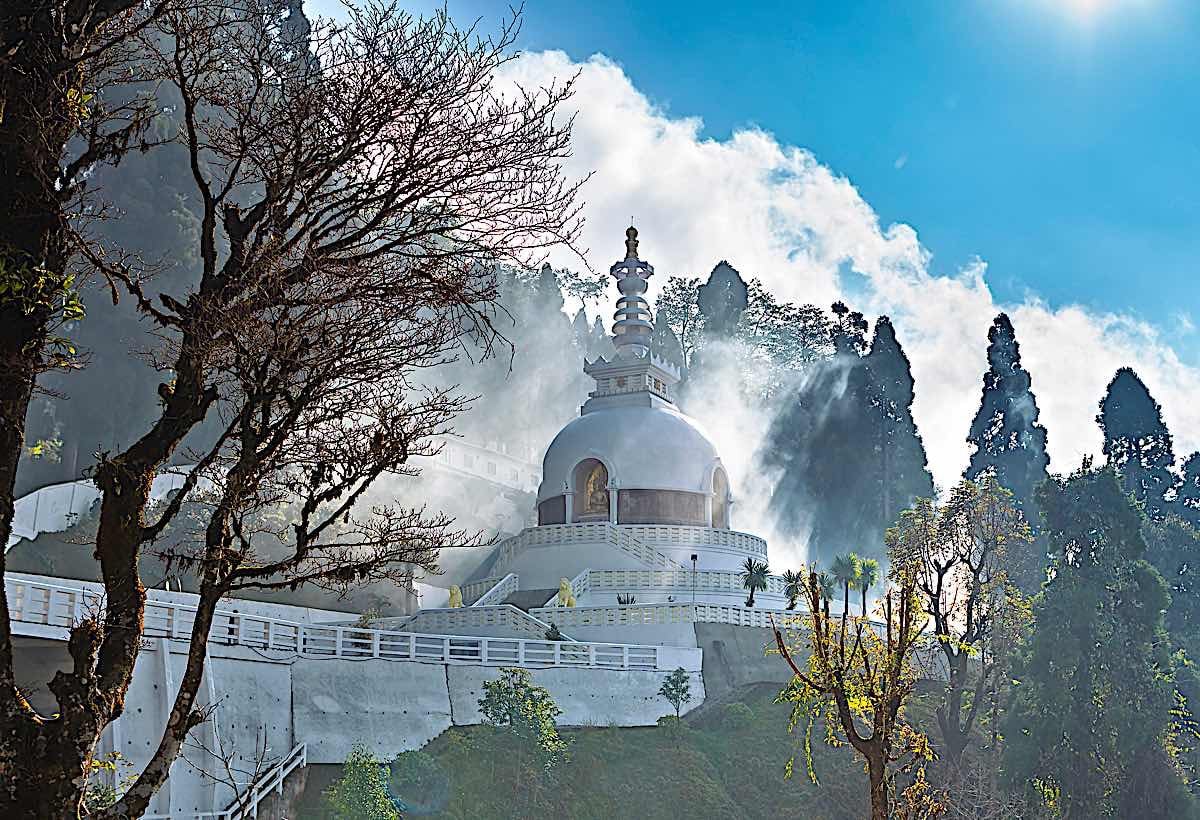
Most Buddhist teachers advocate at least circumambulating Stupas as spiritually beneficial to practice. The Noble Stainless Beams of Light Sutra states clearly:
“Whoever circumambulates or make offerings to a Stupa will be blessed by Tathagatas, move to the supreme enlightened state through a non-returning path, and purify all of their karmic obscurations.”

Nor is that all. The Stupa blesses the four elements it contacts, especially earth and air. The Noble Stainless Beams of Light Sutra says:
“Even if the shadow of a Stupa touches birds, animals, deer, or whomever, they will not be reborn in the lower realms.”

Building, funding or volunteering to build a Stupa, while thinking of the Buddha, “they will all reach Enlightenment.” [Lotus Sutra]
Even touching a Stupa has benefits
The Manjushrimitra Root Tantra says that merely “touching” a stupa has immeasurable benefits:
“Whoever contacts such a Stupa will develop great wisdom and long life, and even if they die, they will be reborn in the higher realms in a royal clan, and they will never go to the lower realms.”

In the Guhyasmaja Tantra:
“A stupa is a palace where all the buddhas are abiding. Those beings who don’t have the karma actually to see buddha need the holy objects of body, speech and mind – statues, scriptures, stupas – as a field for accumulating merit.”
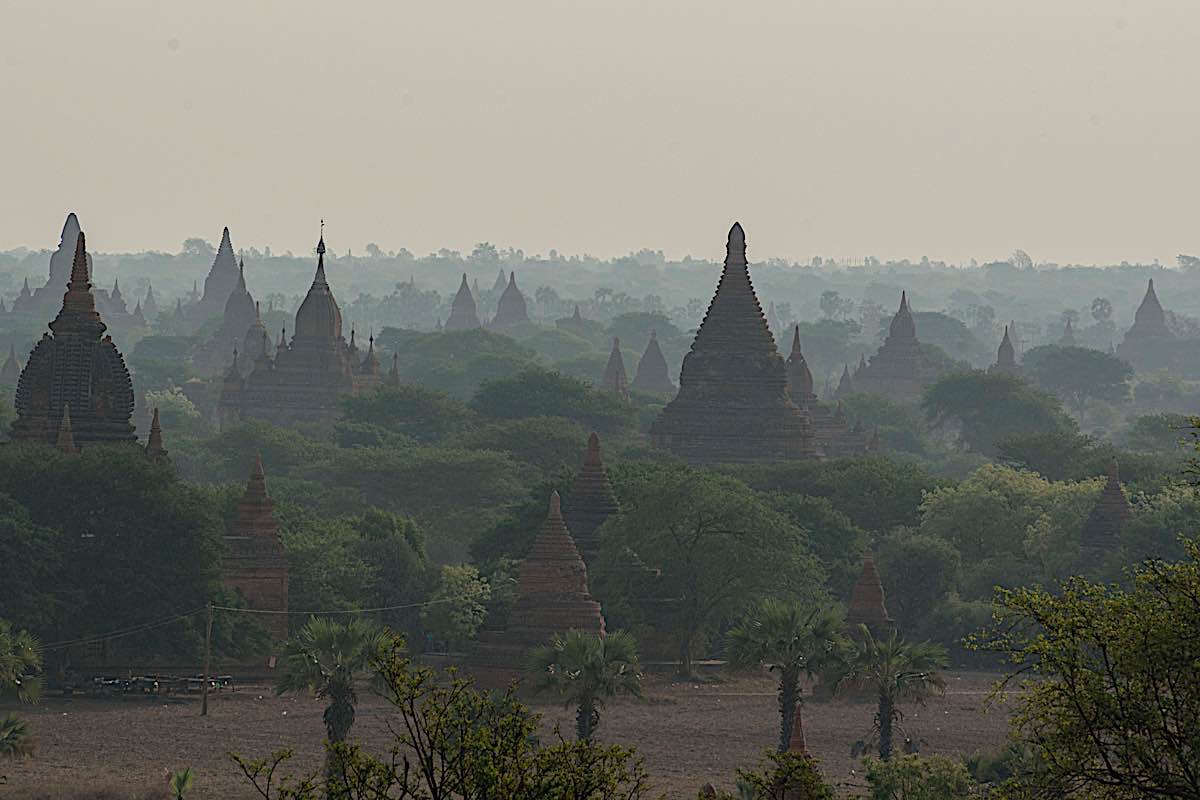
Symbolism of stupas

Although Stupas vary by region and culture somewhat, the typical symbolism is described as:
“The shape of the stupa represents the Buddha, crowned and sitting in meditation posture on a lion throne. His crown is the top of the spire; his head is the square at the spire’s base; his body is the vase shape; his legs are the four steps of the lower terrace; and the base is his throne.”
Profound symbolism of Chorten
The Tibetan Chorten, especially, is profound in symbolism (see diagram),
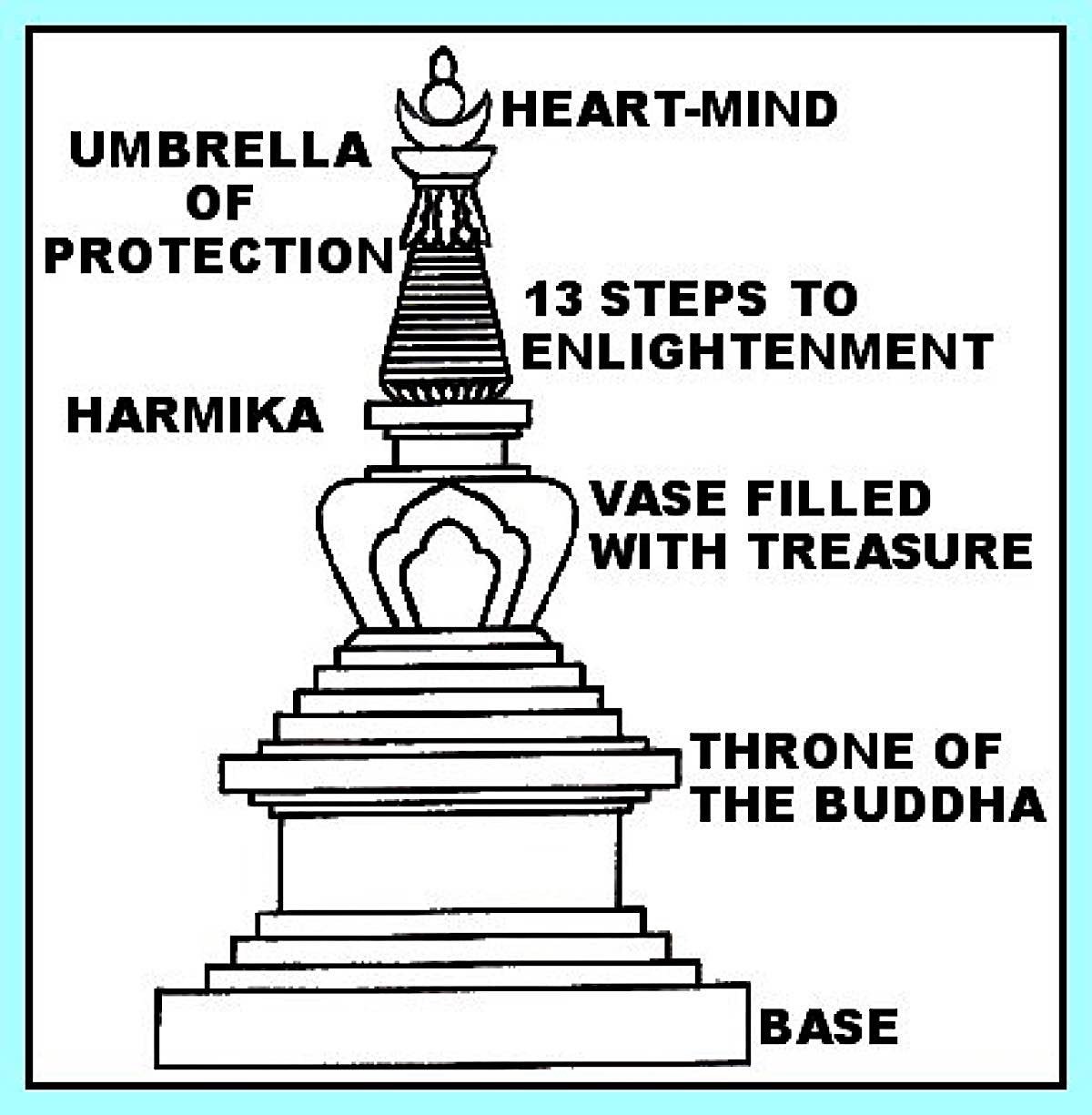
with the
- Throne of the Buddha (on the base)
- Vase filled with treasure (on top of throne)
- Harmika
- Spire of Umbrellas: 13 steps to Enlightenment (rings that are “umbrellas”)
- Heart and mind represented by the top moon, sun symbols.
This also represents the five elements:
- Square base is “earth element”
- Dome represents vase and “water element”
- Conical spire represents “fire”
- Upper lotus parasol and crescent moon represents “air”
- Sun (point) represents “wisdom.”
Stupas by any name: Chorten, Sharito, Thupa

Stupas are near-universal in Buddhism, although the names and shapes vary somewhat:
- English — Stupa
- Sanskrit — स्तूप
- Pali — Thupa
- Tibetan — མཆོད་རྟེན་ — Chorten
- Japanese — Sharito
- Vietnamese — Phu do
- Sinhala — Dagoba
There are also different “purposes” for stupas. The most common are “Votive Stupas” built all around the world for the benefit of students — with circumambulation as a key practice. Historically, there are also:
- Relic stupa — remains of a Buddha, his disciples or great Yogis
- Object stupa — items that belonged to the Buddha or students
- Commemorative stupa — many of these built by the King Ashoka, honouring events in the life of the Buddha
- Symbolic stypas — symbolizing mandalas and aspects of Buddhist theology
- Votive Stupas — built and blessed by traditional practices — specific formulas and “filling” formulas. for example filling with Mantras, Tsa Tsa’s, statues, and so on.
In history, and modern times
In ancient times, Emperor Ashoka was famous for building stupas and monuments. The great Emperor, built stupas to help purify the negative karmas of “emperor building.”
Today, many Buddhist centres build stupas to benefit sentient beings. A current project of Gaden for the West in Canada [Inset below] is funding a stupa, under the inspiration of H.E. Zasep Rinpoche, who wrote:
“According to Buddhist tradition, we build stupas to honour the Buddhas, as well as those who have passed away–those we have loved so much.
“After Bhagavan Buddha entered paranirvana, his disciples Maha Ananda, Shariputra, Subhuti, and so on decided to construct a structure for Bhagavan’s holy relics, as an object of prayer, to create merit, and as a reminder of his precious teachings and great kindness. Stupas are also known as Caitanya, dagoba, and chorten (in Tibetan). The great Buddhist King Ashoka built one million stupas in India in honour of Lord Buddha’s teachings and for the purpose of purifying unwholesome karma and accumulating merit for future generations. Our Stupa will benefit our sangha and community in many ways, including creating the cause for good health, harmony, peace, prosperity, and especially increased Dharma realizations. Building stupas is a tradition in both Hinayana and Mahayana Buddhism (in such places as India, Burma, Ceylon, Thailand, Tibet, Mongolia, China, Indonesia, and Japan). There are eight different designs of stupas to commemorate the life of the Buddha.”
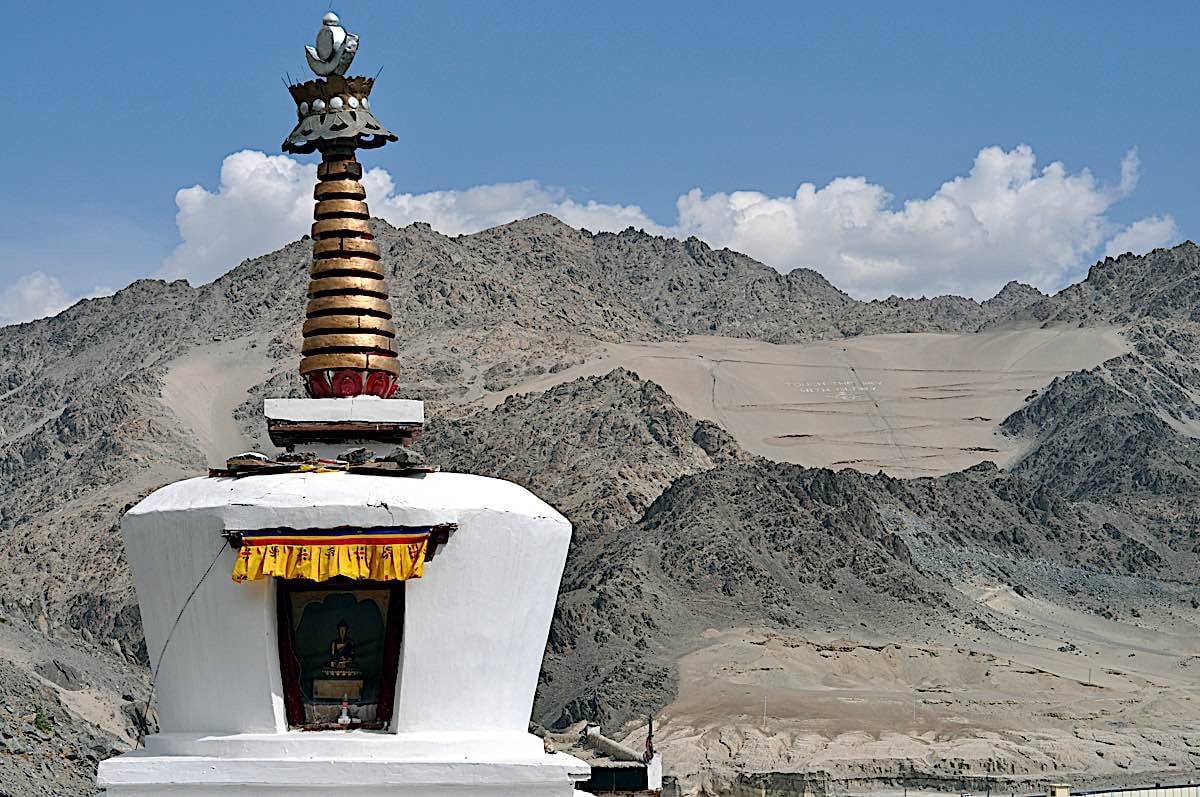
Build them, circumambulate them, honour them
Stupas are built to house relics, often a tiny fragment of a Holy relic. They are also typically filled with Holy items, such as numerous rolled mantras, tsa-tsa’s, statues, blessed herbs and objects.
In particular, the “throne” — which is the base — is filled with precious mantras and objects, including offerings of jewels, sacred texts and symbols of the Dharma. Only new or perfect objects are included, and everything is blessed.
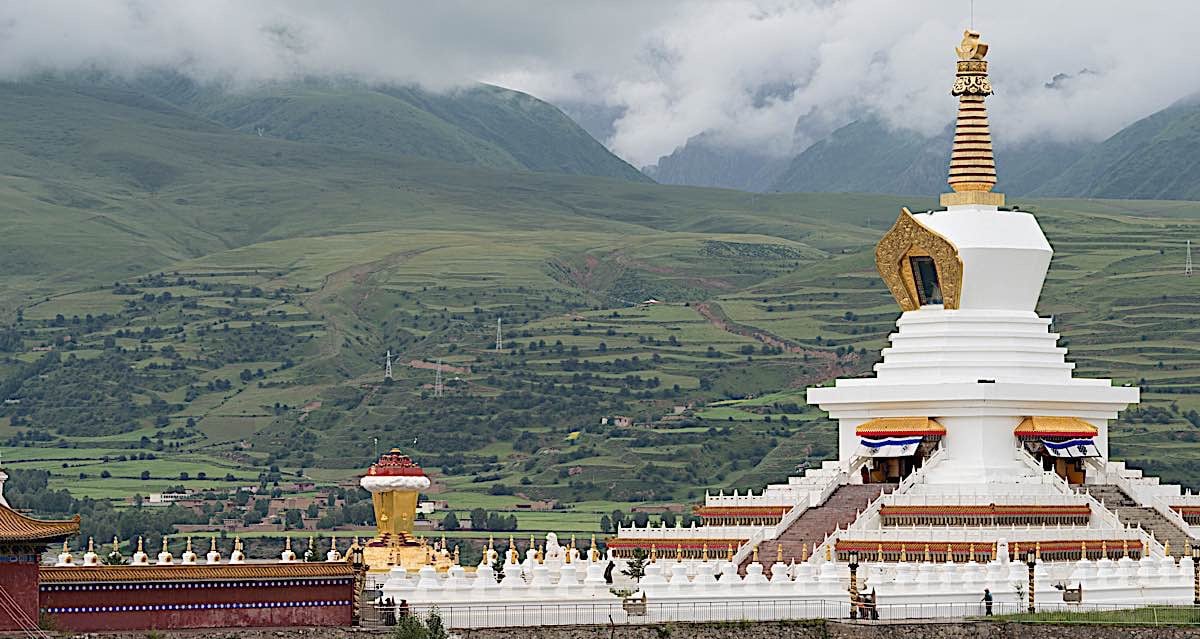
The eighteen benefits of building Stupas
According to the Je Nampa Djepe Do Sutra, those involved in building a stupa (volunteers, patrons who donate funds, organizers) will enjoy some of the eighteen benefits of building sutras in future lives (and indeed some merit in our current life — as always, depends on your ripening karma):
1) One will be reborn In a royal family.
2) One will get a beautiful body.
3) One’s speech will be entrancing.
4) One’s mere sight will be a great joy for the others.
5) One will have a charming and attractive personality.
6) One will be erudite In the five sciences.
7) One will become a support (an example for all).
8) One will be praised from all directions.
9) One will be Inclined to sounds and words of Dharma.
10) One will live only with happiness.
11) One will be venerated both by men and.gods.
12) One will obtain great riches.
13) One will be granted a long life.
14) All one’s wishes will be fulfilled.
15) One’s beneficial activity and wisdom will only grow.
16) One’s body will become as indestructible as the Dorje.
17) One will be reborn In the higher realms or existence.
18) One will reach quickly perfect Awakening.
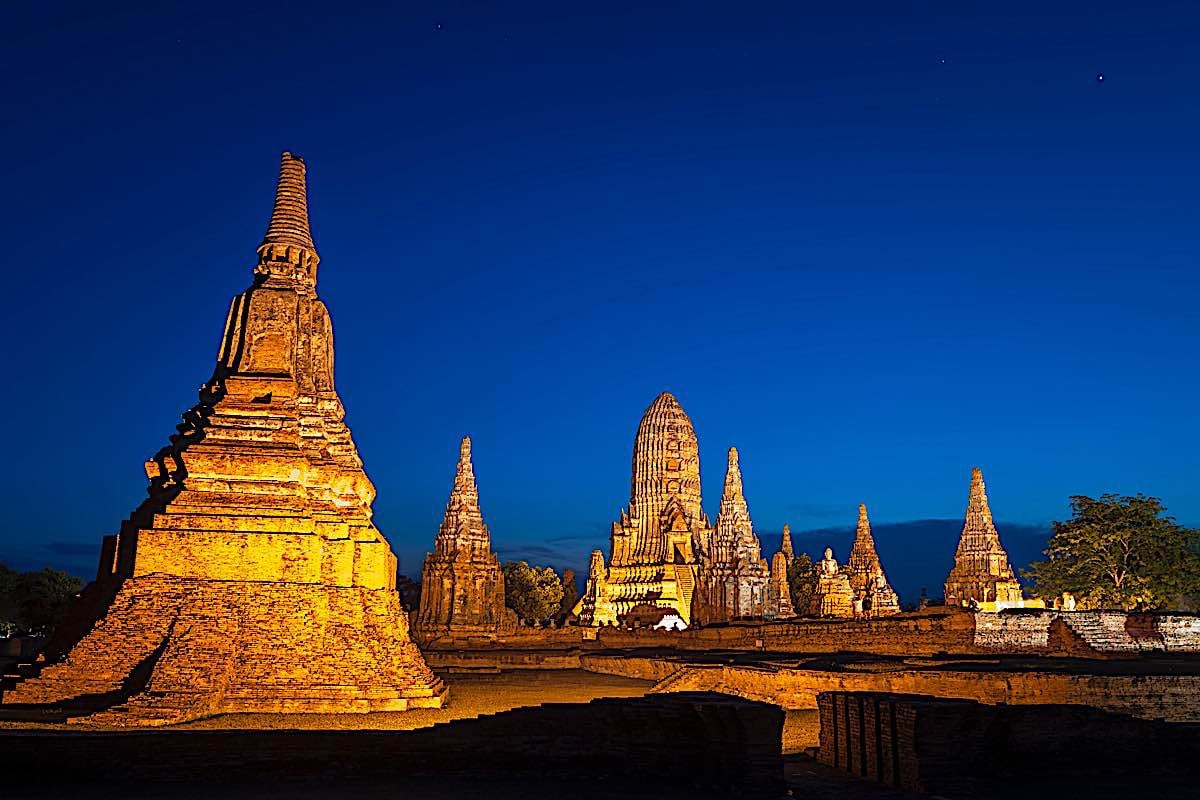

More articles by this author

Offering Light for Saga Dawa Duchen and the Month of Merits: Buddha’s Birthday, Enlightenment and Paranirvana 100 Million Merit Day

Who is my Enlightened Life Protector Based on Tibetan Animal Sign Zodiac in Buddhism? According to Mewa, Mahayana tradition and Kalachakra-based astrology (with Mantra Videos!)
Search
Latest Features
Please support the "Spread the Dharma" mission as one of our heroic Dharma Supporting Members, or with a one-time donation.
Please Help Support the “Spread the Dharma” Mission!

Be a part of the noble mission as a supporting member or a patron, or a volunteer contributor of content.
The power of Dharma to help sentient beings, in part, lies in ensuring access to Buddha’s precious Dharma — the mission of Buddha Weekly. We can’t do it without you!
A non-profit association since 2007, Buddha Weekly published many feature articles, videos, and, podcasts. Please consider supporting the mission to preserve and “Spread the Dharma." Your support as either a patron or a supporting member helps defray the high costs of producing quality Dharma content. Thank you! Learn more here, or become one of our super karma heroes on Patreon.
Lee Kane
Author | Buddha Weekly
Lee Kane is the editor of Buddha Weekly, since 2007. His main focuses as a writer are mindfulness techniques, meditation, Dharma and Sutra commentaries, Buddhist practices, international perspectives and traditions, Vajrayana, Mahayana, Zen. He also covers various events.
Lee also contributes as a writer to various other online magazines and blogs.






